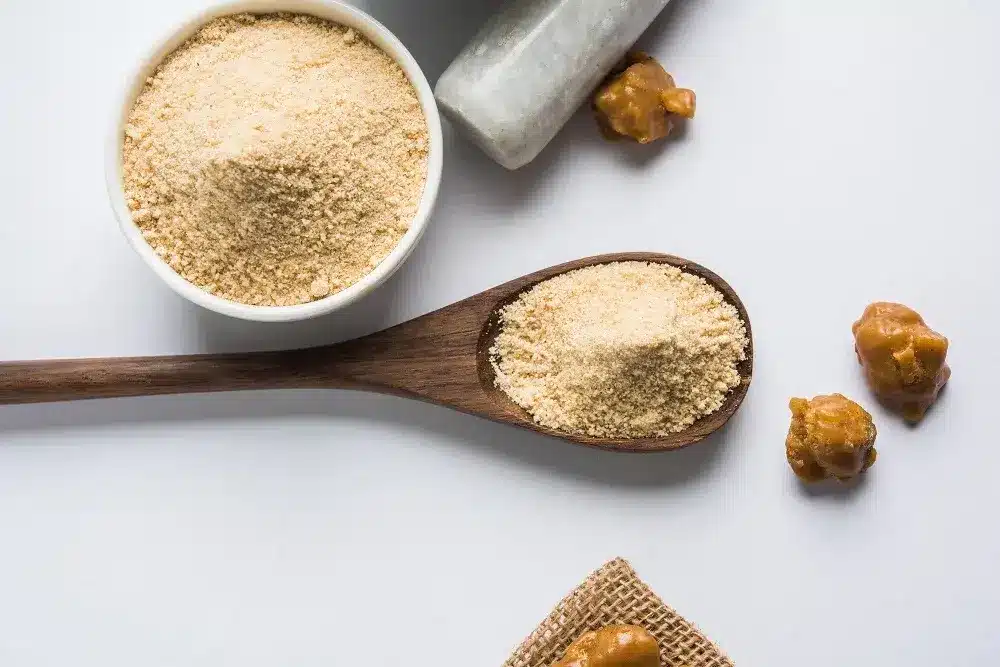Blog
What are the traditional uses of asafoetida?

Asafoetida, known as “hing” in many cultures, has been cherished for centuries for its diverse array of traditional uses. Rooted in ancient wisdom and passed down through generations, the traditional applications of asafoetida span culinary, medicinal, and cultural spheres. In this exploration, we delve into the rich tapestry of traditional uses of asafoetida, uncovering its significance and impact on various aspects of life.
Culinary Delights: Enhancing Flavor and Digestion
One of the foremost traditional uses of asafoetida is in culinary practices, where it serves as a flavor enhancer and digestive aid. Across cultures and cuisines, asafoetida lends its distinctive aroma and taste to a wide range of dishes, enriching their flavor profiles and stimulating the palate. In Indian cuisine, in particular, asafoetida is a staple seasoning in vegetarian and lentil-based preparations, where it adds depth and complexity to curries, dals, and vegetable stir-fries.
Moreover, asafoetida’s traditional use as a digestive aid is deeply ingrained in culinary traditions worldwide. It is valued for its carminative properties, which help to alleviate gastrointestinal discomfort such as bloating, gas, and indigestion. In many cultures, asafoetida is added to dishes prone to causing digestive issues, such as beans and cruciferous vegetables, to promote easier digestion and prevent discomfort.
Medicinal Marvels: Harnessing Nature’s Healing Power
Beyond its culinary applications, asafoetida holds a prominent place in traditional medicine systems for its therapeutic properties. In Ayurveda, the ancient Indian system of medicine, asafoetida is revered for its ability to balance the doshas and treat various ailments. It is believed to possess anti-inflammatory, antimicrobial, and antispasmodic properties, making it a versatile remedy for a wide range of health concerns.
One of the traditional uses of asafoetida in medicine is in the treatment of digestive disorders. It is often prescribed for conditions such as dyspepsia, irritable bowel syndrome (IBS), and flatulence, where it helps to alleviate gastrointestinal discomfort and promote healthy digestion. Asafoetida’s ability to expel gas from the intestines and soothe digestive issues has made it a trusted remedy in traditional medicine for centuries.
Furthermore, asafoetida is valued for its respiratory benefits, particularly in the management of respiratory conditions such as asthma and bronchitis. Its expectorant properties help to loosen mucus and clear the airways, making it easier to breathe. Additionally, asafoetida’s antimicrobial properties make it effective in combating respiratory infections and supporting overall respiratory health.
Cultural Significance: Rituals, Festivals, and Everyday Life
In addition to its culinary and medicinal uses, asafoetida holds cultural significance in many societies, where it is incorporated into rituals, festivals, and everyday life. In India, for example, asafoetida is used in religious ceremonies and rituals as an offering to deities and as a symbol of purity and auspiciousness. It is believed to purify the environment and ward off negative energies, making it an integral part of religious and spiritual practices.
Moreover, asafoetida’s role in everyday life extends to its use in traditional folk remedies and rituals for various health and wellness purposes. It is often incorporated into herbal preparations and poultices to treat minor ailments such as insect bites, skin irritations, and digestive issues. Additionally, asafoetida’s antimicrobial properties make it a valued ingredient in natural cleaning and disinfecting solutions used in households.
Practical Applications: Tips for Incorporating Asafoetida into Daily Life
For those looking to embrace the traditional uses of asafoetida in their daily lives, there are several practical tips to keep in mind. When purchasing asafoetida, opt for high-quality, pure resin from reputable sources to ensure potency and authenticity. Store it in an airtight container away from moisture and heat to preserve its flavor and aroma.
In cooking, experiment with different recipes and culinary traditions to experience the diverse uses of asafoetida. Start with small amounts and adjust to taste, as its potent flavor can easily overpower other ingredients. Explore traditional Indian dishes like dals, curries, and pickles, as well as innovative fusion recipes that incorporate asafoetida’s unique flavor profile.
Furthermore, consider incorporating asafoetida into daily rituals and practices to experience its cultural and spiritual significance. Use it in religious ceremonies and rituals as an offering to deities or incorporate it into daily rituals for purification and protection. Additionally, explore traditional folk remedies and rituals that incorporate asafoetida for various health and wellness purposes.
Embracing Tradition and Wisdom
In conclusion, the traditional uses of asafoetida encompass a rich tapestry of culinary, medicinal, and cultural practices that have been passed down through generations. From enhancing flavor and aiding digestion to treating ailments and purifying the environment, asafoetida’s versatility and efficacy have stood the test of time. By embracing these traditional uses and incorporating asafoetida into daily life, individuals can experience the profound benefits of this ancient spice and enrich their lives with its flavor, aroma, and healing properties.
FAQ:


